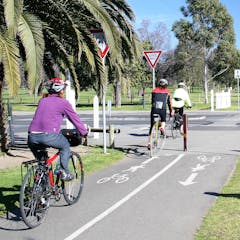
Articles on Urban planning
Displaying 221 - 240 of 606 articles

More than 300,000 homes have been built in areas of high flood risk since 1989.

Land-use planning should give more weight to the increasing risks of natural hazards like bushfires as the first step in reducing the impacts.

Residents of the ‘leafy suburbs’ will continue to fear what they might lose to increasing urban density without an explicit planning approach that enhances green space in affected neighbourhoods.

When primary school children in a disadvantaged part of Sydney were asked to map what they valued in the area, their choices were revealing and sometimes surprising.

Regulating Sidewalk Labs proposed developments poses new challenges for assigning responsibility and oversight.

With space in our cemeteries running out, we could bury the dead in new forest developments that would bring green space to our urban areas.

Auckland, New Zealand’s largest city, is going through a transformation of its centre and waterfront to support of walking, cycling and public transport, and less space for cars.

The Spanish city is remaking urban neighbourhoods by limiting through traffic in superblocks that give priority to pedestrians and street activities, not cars.

Shifting the capital of Indonesia and other countries may actually send the wrong message that cities too can be discarded.

Trees and the shade they provide are one of the best ways of cooling cities. But they also present challenges that are best resolved by managing this shared resource as part of an urban commons.

The ‘superblocks’ are expected to have massive benefits for health and well-being – but it takes good governance.

Greater urban density is making it harder to preserve, let alone increase, tree cover. It’s vital, then, to demonstrate the full value of green infrastructure for healthy liveable cities.

The UK government has been trying to hand planning power over to local people for 50 years – but research reveals it has fallen far short of its goals.

Planners understand the key elements of urban communities that will improve residents’ health and well-being. They also need to be able to convince others to create such communities.

Rezoning to mixed-use residential development drove small manufacturers and creative producers out of the inner city. The result is less diversity of land uses, jobs and services where we most want it.

Self-driving cars may someday drop off their owners downtown and then leave to find free parking. What would that mean for cities of the future?

A report based on public consultations conducted by Sidewalk Labs has still not answered many pressing concerns about privacy and consent in Toronto’s Quayside development.

Sidewalk Labs has released its Master Innovation and Development Plan and invited the public to provide feedback.

The seemingly ad hoc collection of nine City Deals announced so far falls short of a national settlement strategy that finally gets to grips with where our growing population might live and live well.

The global trend is to free up valuable city space by reducing parking and promoting other forms of transport that don’t clog roads and pollute the air. Australian cities are still putting cars first.
